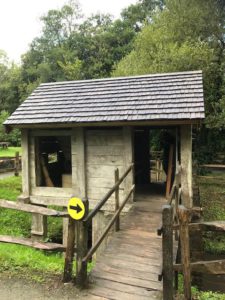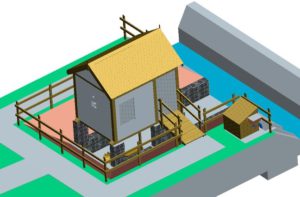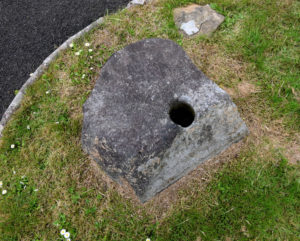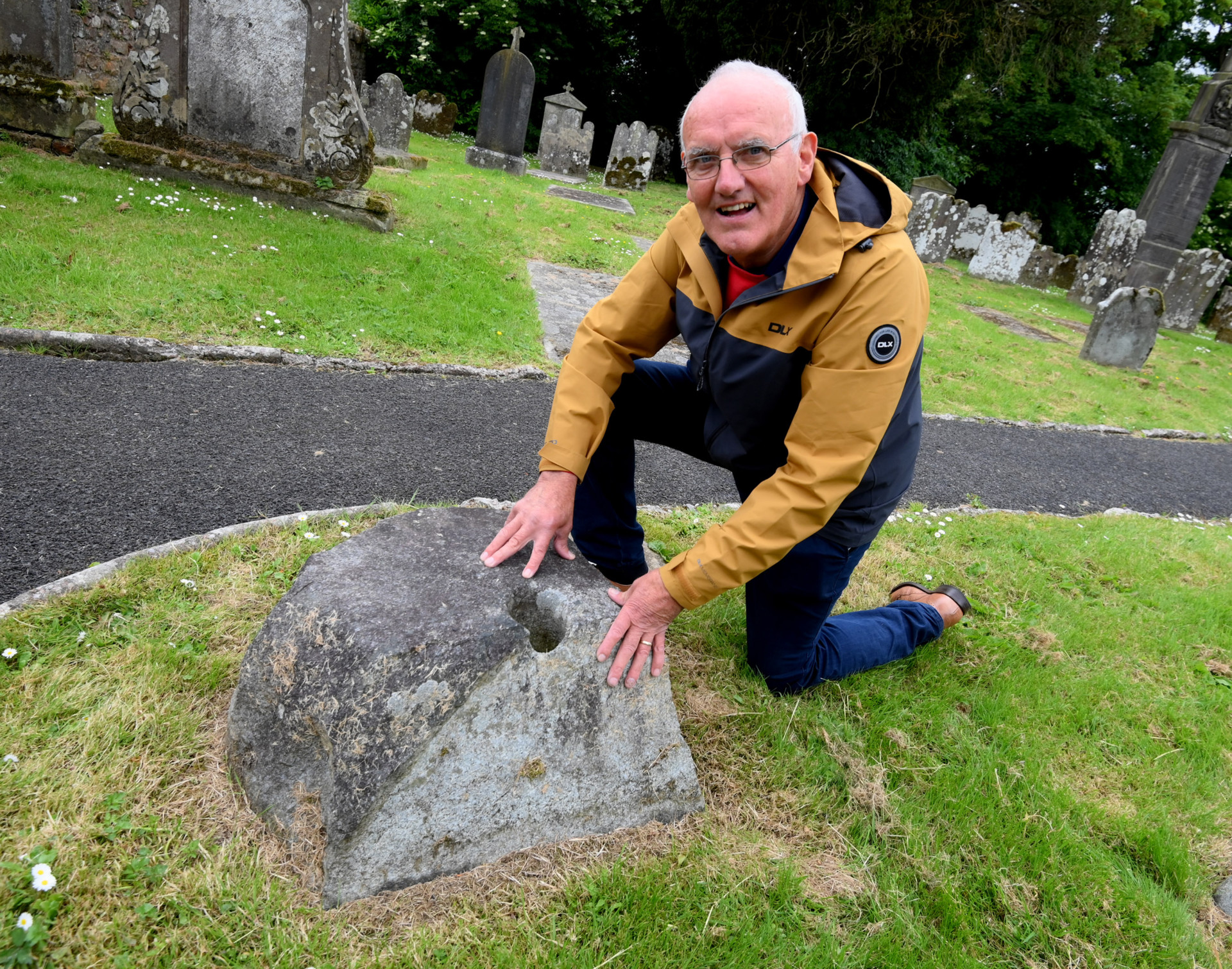DONAGHMORE Historical Society planning to build replica of mill which would have been used in seventh century at monastery
A group of dedicated historians in Donaghmore are hoping to turn back the wheels of time by recreating an historic mill, inspired by a major discovery in the village.
An unusual, but somewhat unassuming stone – bearing the scars of centuries of neglect and damage – was discovered at an undisclosed location in Donaghmore, almost 40 years ago. But it was only around three years ago, that the true significance of the artefact was confirmed.
The stone was in fact a remnant from a mill built and used by the monks from the local monastery from around the seventh century – pre-dating the more common vertical water wheel mills.
To give further context to its age, the mill is likely to be have been in use up to 500 years before the arrival of the mighty O’Neill clan into the village of Donaghmore. That’s how old it is.
And it was another O’Neill, local historian Pat O’Neill – a member of the Donaghmore Historical Society – who made the discovery back in 1983.
After many years, the mystery of what the stone was, was solved when a group of visitors came from Dublin to the village three years ago.

Pat explained, “I had been doing tours around some of the old sites in Donaghmore and that’s when I found the stone. We didn’t know what it was. We had a fair idea that it might be something important, but it was only three years ago when an archaeologist from Dublin came up to Donaghmore for a tour, and it was he who confirmed that it was a stone from a horizontal wheel watermill which pre-dates the more common vertical wheel water mills which you would still see around the country.
“And we have now had it officially confirmed by the Ancient Monuments Northern Ireland.”
Since the confirmation of the artefact, Pat and his fellow historians have been busy researching their intriguing find as well as making exciting plans for the future.
“This mill was an Irish design and this design was exported all over Europe by the monks,” Pat continued.
“You would find many of them in south west France, and in the Lourdes region there is actually one of these mills still working, which is amazing to see.
“These mills came before the creation of the gearing system and they used very basic but smart technology.
“We have been doing a lot of research over the last year or so, myself and Richard (Byrne). Hopefully within the next 18 months or so, we hope to create an exact replica of the mill, which will be sited near the river.
“It’s certainly a very exciting find for Donaghmore. There only a few of them left in Ireland. We think that this stone, after it was used in the mill, was taken out and was used as the base for a High Cross in Donaghmore.”
tourist attraction

Richard Byrne, who is a retired engineer, has been studying how to recreate the ancient mill and said their plans are well advanced for what could be a very significant tourist attraction in the village.
“Yes, when we get it completed, we hope it will be used for tourists and also for local school children to come and learn about how this mill worked,” said Richard.
“It is a great opportunity. We intend to have it fully operational so that it can mill flour from grain. At the minute we are still working out what the exact cost of building this mill will be, but once that is completed, we will start to look for funding and maybe we will have it up and running in around a year or two.”
For Richard, who is also a member of the Donaghmore Historical Society, the mechanisms and history of these ancient mills has been a steep learning curve.
“I didn’t know anything about them at all, until Pat took me to see the mill stone about a year ago and that’s when I became interested.
“It was soon after, that we decided that we could build our own replica here in Donaghmore.
“I travelled down to the Irish National Heritage Park in Wexford at Ferrycarrig where they have the only other mill of this type in Ireland and we now have our own drawings of how the mill will look and work.
“The building to house the mill will be made from oak with a shingle roof, so that it will all be authentic to the original mills back in the seventh century. We are hoping to have it situated near the river. We will likely have to pump the water up to it, but that shouldn’t be a problem.”
He added, “Donaghmore already has a really rich heritage and it was of course home to a monastery where this mill would have been. There are about 16 to 18 important historical sites in and around the village.
“We believe there were six High Crosses surrounding the monastery at one point and this stone would have been the base for one of those at a time.”
According to Donaghmore Historical Society, it is believed that the monastery was developed close to the old graveyard in Donaghmore, and operated from about the sixth century until the year 1197, when Rory McDonleavy sacked and burned it.
Until recently, it had also been believed that the only relic of the monastery was the old Celtic cross in the village which dates from about the ninth century. However, thanks to the work of Pat, Richard and the Historical Society the stone can now also be added as a new and intriguing glimpse of life back in the dark ages and beyond.








